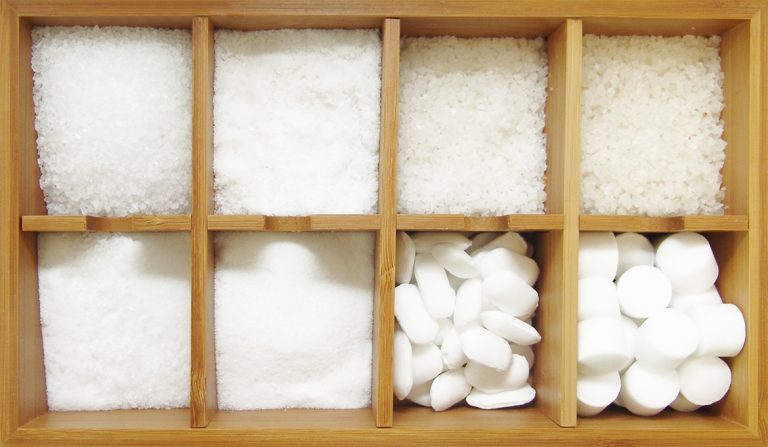Tears, blood, sweat, muscles, bones, all our body is salty.
Salt is a universal food, has its place at every table, and is a carrier of minerals and trace elements essential to our metabolism.

Salt is:
A molecule
It is known as “Sodium Chloride” (NaCI). It is composed by sodium ions (39%) and chloride (61%), responsible for the salty taste. Once absorbed, salt dissolves in the bloodstream having regulation and regeneration functions: balance of organic fluids, regulation of blood and volume pressure, digestion, information reception and transmission via neurons, transmission of nervous impulses from the brain to the muscles and even to the heart. Daily average need of salt intake is about 6 g (a tablespoon).
Important: Only about 20% of daily salt intakes result from addition of salt to our meals. Most of it is already naturally present in all foods, such as bread with half of daily intake, cakes and pastries, as well as meat and sausages which have high salt levels.
A food
Salt is not a spice. In their natural and unprocessed state foods are low in salt. So, it is necessary to add balanced quantities of salt to your meals in order to fulfil your physiological needs and satisfy your taste.
97% purity
According to the international standard Codex Alimentarius STAN 150, salt purity grade shall not be less than 97%. It shall be white and come from salterns, mines or underground rock-salt deposits. All the production stages shall be controlled until the product arrives at final consumers.
A nutrient carrier
In 1996 the Portuguese government declared salt as an iodine carrier. Insufficiently present in unprocessed foods, iodine is a key component for proper thyroid function, growth and psychomotor development.